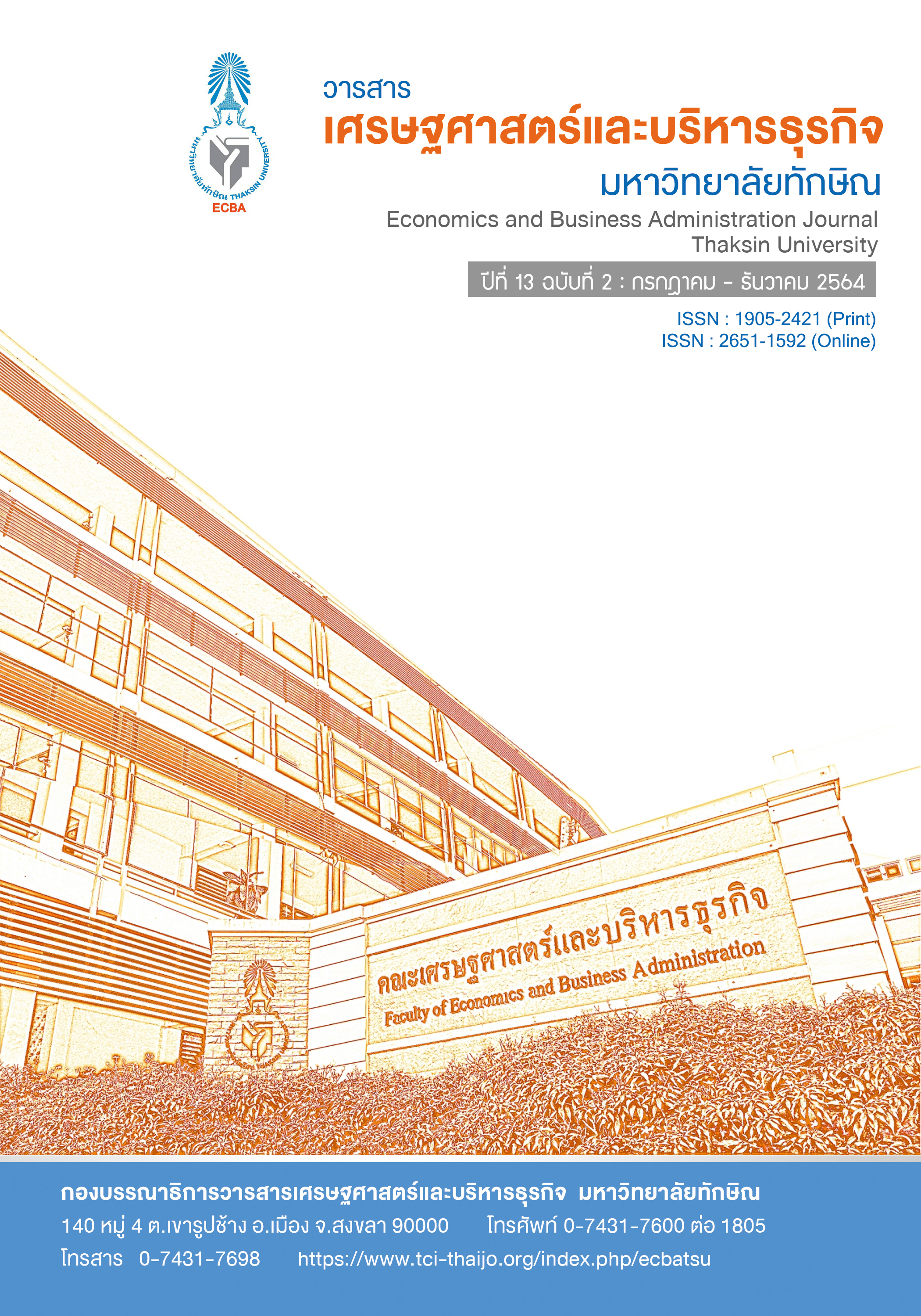Financial Feasibility Study of Investment in Customs Tracking System through e-Lock Technology in Customs Free Zone
Keywords:
Cost-Benefit Analysis, Customs Free Zone, Electronic Devices, e-lock TechnologyAbstract
This study investigated the use of tracking system under the e-lock technology in the customs clearance in the free zone in order to evaluate the possibility for the investment in the construction of such system. The project worthiness assessment and sensitivity analysis were employed in the evaluation, and the criteria included discounted payback period, net present value, and internal rate of return. The data were collected from a private company which piloted the tracking system along with the Thai Customs Department during January – December 2019.
The project duration is 10 years, it was found that the tracking system under the e-lock technology was worth investing when two criteria, i.e. the decision-making standard and the expected decision making, were considered. Discounted payback period is 1 year and 5 months, Net present value is 6,535,767 baht and Internal rate of return is 71.07 percent. Furthermore, through the automation system, the system could reduce the operation time, increase the reliability, and enhance the continuity of the transfer of goods and products. Thus, this system could be employed as a tool to increase the competitive ability. It could serve customers’ needs as well as decrease the operator’s cost effectively.
This study utilized the project sensitivity analysis for investigating conditions that are still able to maintain the expected worth of investment. Case of increased cost but unchanged benefit, it found that the cost should not increase more than 47 percent as forecasted cost. Case of unchanged cost but decreased benefit, it found that the number of shipment trips should be not less than 25 trips per day. Case of changed cost according to number of shipment trips, it found that the number of shipment trips should be not less than 22 trips per day.
References
Bank of Thailand. (2018). Deposit Rates for Individuals of Commercial Banks as of 12 November 2018. Retrieved from http://www.bot.or.th/thai/statistics
Friedlos, D. (2009). Taiwan Customs Officials Adopt RFID-enabled Container Seals. RFID Journal. Retrieved from http://www.rfidjournal.com/article/view/4727
Panitpracha, Varnasavang, Kamolsook & Udomvitid. (2008). RFID Technology in Logistics. Retrieved from http://www.rfidjournal.com/article/view/4727
Plangprasopchoke, U. & Muttitanon, W. (2013). Intelligent Evaluation for e-seal Adoption in Customs. Office of the Higher Education Commission. Retrieved from http://tar.thailis.or.th/bitstream/123456789/604/1/Paper%20ID_111.pdf
Samote, P. (2009). A Study of Guidelines for Developing Information Technology Prototypes in the Process of Importing and Exporting Goods by RFID System, Duty Free Zone, Suvarnabhumi Airport. (Independent Study, Master of Business Administration Degree). University of the Thai Chamber of Commerce. Bangkok.
Tax Incentives Division, Customs Department. (2018). Free Zone Tax Benefits. Retrieved from http://www.customs.go.th/
Tax Incentives Division, Customs Department. (2019). The list of Thailand Free Zone (Data as of 9 Januanry 2019) Retrieved from http://www.customs.go.th/
Thaniland Investment Forum. (2019). Thailand Inflation Rate as of March 2019. Retrieved from https://thailandinvestmentforum.com/2019/03/01/
Tsai, F.-M. & Huang, C.-H. (2012). Cost-Benefit Analysis of Implementing RFID System in Port of Kaohsiung. Retrieved from SciVerse ScirnceDirect Website: https://www.sciencedirect.com/science/article/pii/S1877042812046174/




